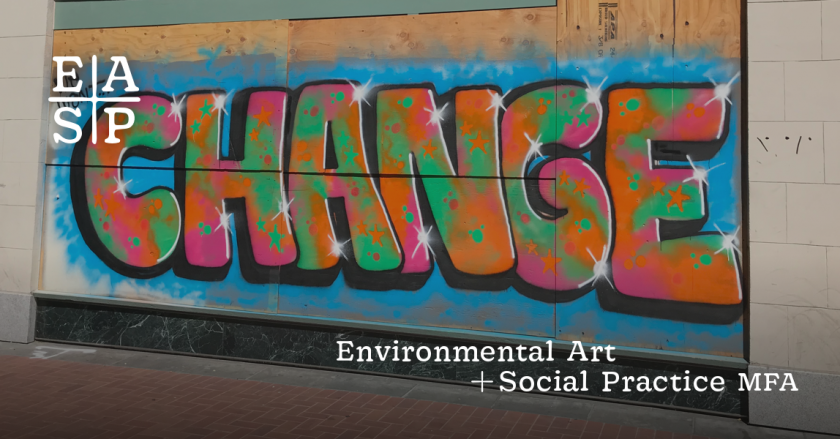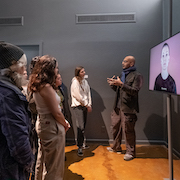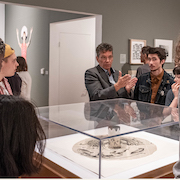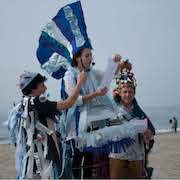Letter from the Director
Art, the systems and institutions that surround and support art, and the people who make art are constantly evolving in relation to worlds in flux. In unprecedented times of climate crisis and of raised consciousness about extreme racial and other social inequalities, the boundary-crossing, associative and connective possibilities of creative practice can reach across perceived divisions and create new forms and alternate understandings. Our place-based, topically-focused MFA program is all about making connections:
- between environmental & social justice;
- human & non-human worlds;
- indigenous practices & visionary futurisms;
- traditional techniques & new technologies;
- solo & collaborative practices;
- feeling & thinking;
- and art & life.
The energy in these conjunctions drives our program, which focuses on making and locating art in the world, in relation to pasts and to futures, with diverse communities, and grounded in individual and collective commitments, inventions, and aesthetic visions. Our name highlights the links between environmental and social because we understand that these central issues of our time are not separate concerns of different groups based on privilege or identity, but inextricably connected, and deeply relevant for inspired art practice.
Environmental art is based in ecological principles of co-existence among human and non-human worlds, including a respect for difference, and listening; social practice recognizes that the systems and structures of social relations are a “material” that can be examined, critiqued, and reconceived through art. These art practices share ethical principles and methods, a fundamental concern with justice, and commitments to making change.
We invite prospective students who want to deepen and develop their work through rigorous and radical graduate study to join us. Our MFA program is an opportunity to study and learn together. We offer a structured curriculum but no prescriptions or formulae; instead, an invitation to help co-invent this evolving field. Our faculty have deep and varied experience in social practice and environmental art, as well as media specialities in painting, photography, sculpture, new media, performance, and printmaking. Students will have access to resources and to faculty throughout the university, which is renowned for its innovative contributions to interdisciplinary research. The UC Santa Cruz campus is positioned in an exquisitely beautiful and ecologically diverse location between the Pacific ocean and the redwood forests, and in the midst of some of the most intense and pressing environmental, economic and social contradictions that structure contemporary life. There is a lot of work to do. We expect the world of our students and will give you our full attention as teachers, as artists, as scholars, and as co-conspirators in world-building.
In solidarity,
Director of Graduate Studies




